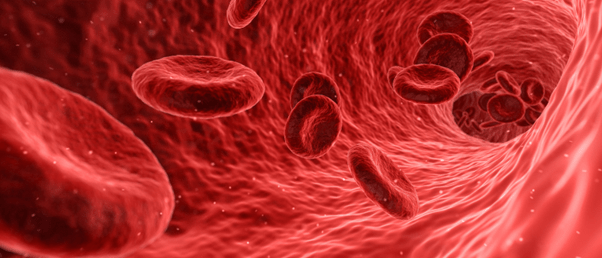
BioTechniques News
Beatrice Bowlby

A new nanotherapy that prevents both arterial and venous thrombosis has been developed and could lead to therapies that prevent almost all types of blood clots.
Researchers from University Hospitals Cleveland Medical Center and Case Western Reserve University (both OH, USA) have identified a targetable pathway to mitigate both arterial and venous thrombosis, two different types of blood clots. They used this to develop a novel nanotherapy, which has had promising preclinical results and could lead to safer ways to treat patients experiencing clotting, without increasing the risk of bleeding.
Arterial and venous thrombosis have previously been thought to have distinct underlying mechanisms and therefore have been approached with different treatment paradigms. Arterial thrombosis can lead to heart attack or stroke as the blood clot occurs in the arteries, obstructing blood flow to major organs. This is treated with antiplatelet agents, such as aspirin. Venous thrombosis is treated with anticoagulants and is due to blood clots in the veins, causing pain or swelling in the legs.
Recently, researchers have started to question if there are some similarities between these two blood clotting mechanisms, which could be used to design novel therapeutic targets.
The researchers of this study used animal models to investigate this, and found that neutrophils, a type of white blood cell, are overactive in both arterial and venous thrombosis. They showed that overactive neutrophils lead to increased production of key factors in building blood clots. The excessive activation in these instances is due to an increased capacity of neutrophils to migrate and adhere to sites of injury.
 Nanocarriers deliver 2-in-1 cancer treatment
Nanocarriers deliver 2-in-1 cancer treatment
An innovative nanocarrier delivers combination therapy simultaneously, showing promising results in pancreatic cancer mouse models.
A cluster of receptors that are unique to activated neutrophils was also identified, and the researchers used this to develop an antibody-coated nanoparticle that targets those clusters to stop this process and prevent blood clots. The researchers explained that for the first time, it’s been shown that arterial and venous thrombosis are driven by neutrophils and that targeting these white blood cells decreases clotting risk without increasing the risk of bleeding.
“Because neutrophils have an important role in innate immune function, if we target all neutrophils, we will increase our risk for infections,” explained Lalitha Nayak, the first author of the study. “But here, we are beginning to say that we can identify activated neutrophils and only prevent them from participating in the clot.”
The researchers also identified a transcription factor called Krüppel-like factor 2 (KLF2) that is central to neutrophil activation and presents another possible mechanism that can be targeted to prevent both arterial and venous blood clots. They found that KLF2 regulated neutrophil activation and upon deleting it in mice, neutrophil activation increased, causing more severe blood clotting.
These findings could lead to therapeutics that are especially necessary for cancer patients, as blood clots are a common complication. According to the Centers for Disease Control and Prevention (GA, USA), blood clots are the leading cause of death in cancer after cancer itself.
Nayak concluded, “the next steps in our research involve using a mouse model of cancer-associated thrombosis to see whether we could use nanoparticles as targeted therapy in this case.”
The post Nanotherapy prevents both arterial and venous thrombosis appeared first on BioTechniques.
Full BioTechniques Article here
Powered by WPeMatico
